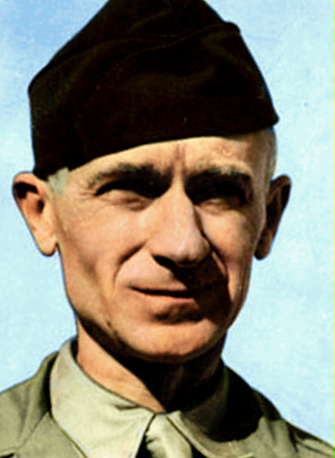The Pittsburgh Press (March 19, 1945)

Roving Reporter
By Ernie Pyle
IN THE WESTERN PACIFIC (delayed) – The men aboard an aircraft carrier could be divided, for purposes of clarity, into three groups.
There are the fliers, both officer-pilots and enlisted radiomen and gunners, who actually fly in combat they do nothing but fly, and study, and prepare to fly.
The there are the men who maintain the fliers, the air officers, and the mechanics and the myriad plane handlers who shift and pish and manhandle the planes a dozen times a day around the deck.
These men are ordinarily known as “Airedales,” but the term isn’t much used on our ship. Usually they just call themselves “plane-pushers.”
And third is the ship’s crew – the deck hands, engineers, signalmen, cooks, plumbers and barbers. They run the ship, just as though it were any ship in the navy.
The fliers aren’t looked upon as gods by the rest of the crew, but they are respected. Hardly a man on the crew would trade places with them. they’ve seen enough crash landings on deck to know what the fliers go through.
But there is a feeling – a slight one – between the ship’s regular crew and the air maintenance crew. The feeling is on the part of the ship’s crew. They feel that the plane-handlers think they’re prima donnas.
They say to you “Them Airedales is the ones that gets all the glory, nobody ever hears about us. All we do is keep the damn ship going.”
But as far as I can see, the Airedales haven’t had an awful lot of glory. And their job is often a miserable one. Their hours are ungodly, and in the pinches they work like fiends. I think the Airedale deserves what little credit he gets.
Like flower garden
It is these “plane-pushers” who make the flight deck of an aircraft carrier look as gay and wildly colorful as a Walt Disney cartoon. For they dress in bright colors.
They wear cloth helmets and sweaters that are blue, green, red, yellow, white or brown. They make the flight deck look like a flower garden in June.
This colorful gear isn’t just a whim. Each color identifies a special type of workman, so they can be picked out quickly and sent on hurried tasks.
Red is the gasoline and firefighting detail. Blue is for the guys who just push the planes around. Brown is for plane captains and mechanics. White stands for radiomen and the engineering bosses. Yellow is for the plane directors.
Yellow is what a pilot looks for the moment he gets on deck. For the plane directors guide him as though they were leading a blind man. they use a sign language with their hands that is the same all over the Navy, and by obeying their signs explicitly, the pilot can taxi his plane within two inches of another one without ever looking at it.
No more hammocks
All the pilots and ship’s officers live in “officers’ country” in the forward part of the ship, they live in comfortable cabins, housing from one to four men.
The crew lives in compartments. They are of all shapes and sizes. Some hold as little as half a dozen men. Others are big and house a hundred men.
The Navy doesn’t use hammocks anymore. Every man has a bed. It is called a “rack.” It’s merely a tubular framework, with wire springs stretched across it. It is attached to the wall by hinges, and is folded up against the wall in the daytime.
The “racks” aren’t let down till about 7 in the evening (except for men standing regular watch who must sleep in the daytime). Hence a sailor has no regular place to sit or lie down during the day if he does nap a few spare minutes.
A light carrier, such as mine, has only about a third as many planes as the big carriers, and less than half the crew, but it does exactly the same kind of work.
Of the three types of carriers in the Navy, ours has the narrowest flight deck of all. It’s so narrow that when planes take off, they use the left side of the deck, in order that their right wingtip won’t come too close to the “island” as they pass.
Our pilots and crew are quite proud that we have the narrowest flight deck in existence. They’re proud they can even hit the thing. They enjoy telling this story, as an illustration:
One day one of our planes had engine trouble or something and couldn’t make it back to our ship, and had to land on the nearest carrier, which happened to be a big one.
The pilot circled around it and radioed in, asking permission to land. When the permission came back, he sent another message facetiously inquiring: “Which runway?”